|
|
Hello Great Gardener,
The hot days of summer are here and I have included in this e-newsletter some great watering tips.
|
|
|
|
|
As always, if you have any questions, comments or suggestions, hit reply. I would love to hear from you. Have a great-gardening day.
Sincerely,
Holly
|
|
|
|
|
|
Top Ten Beneficial Insects
|
|
|
|
|
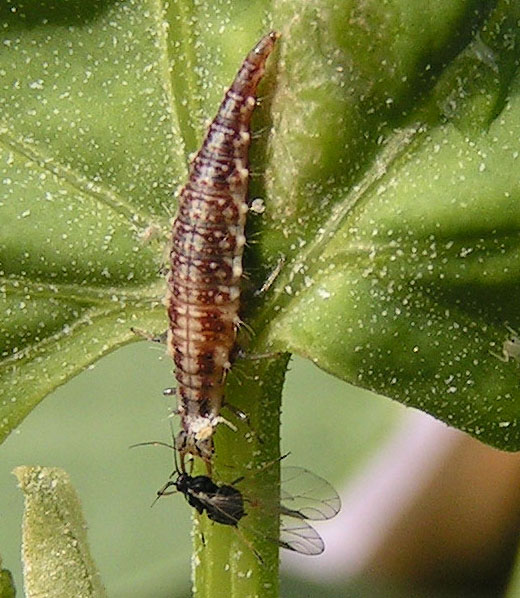
|
Larvae
Photo By Eric Steinert
|
|
|
|
|
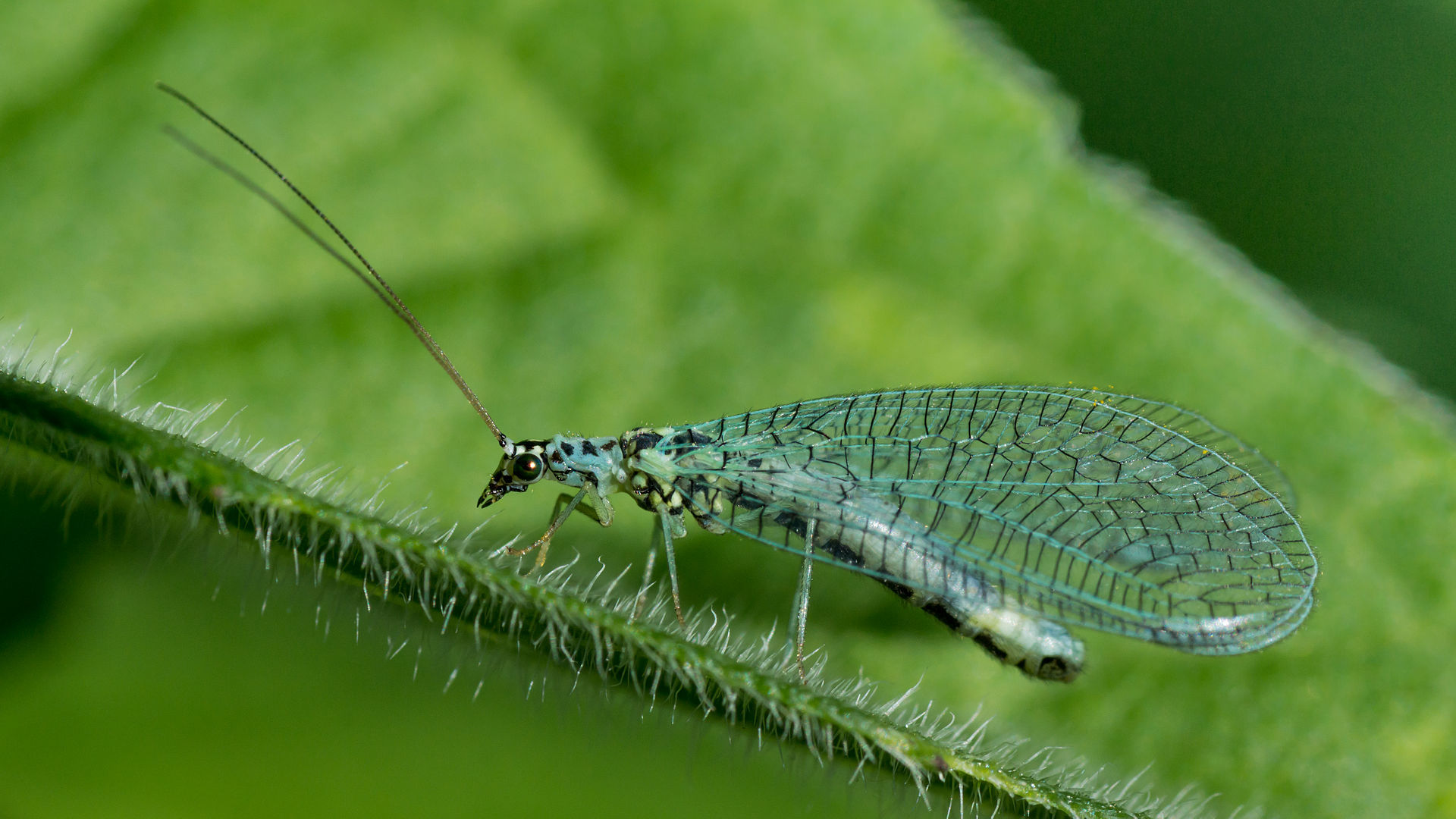
|
Adult
Photo by Mathias Krumbholz
|
|
|
|
|
|
|
Green Lacewings
Green lacewing are common inhabitants in much of North America. Adults feed only on nectar, pollen, and aphid honeydew, but the larvae are active predators feeding on the eggs and immature stages of many soft bodied insect pests, including several species of aphids, spider mites (especially red mites), thrips, whitefly, leafhoppers, some beetle larvae, eggs of pest moths, and mealybugs. Be sure to provide food for the adults so they will stay and deposit their eggs.
|
|
|
|
|
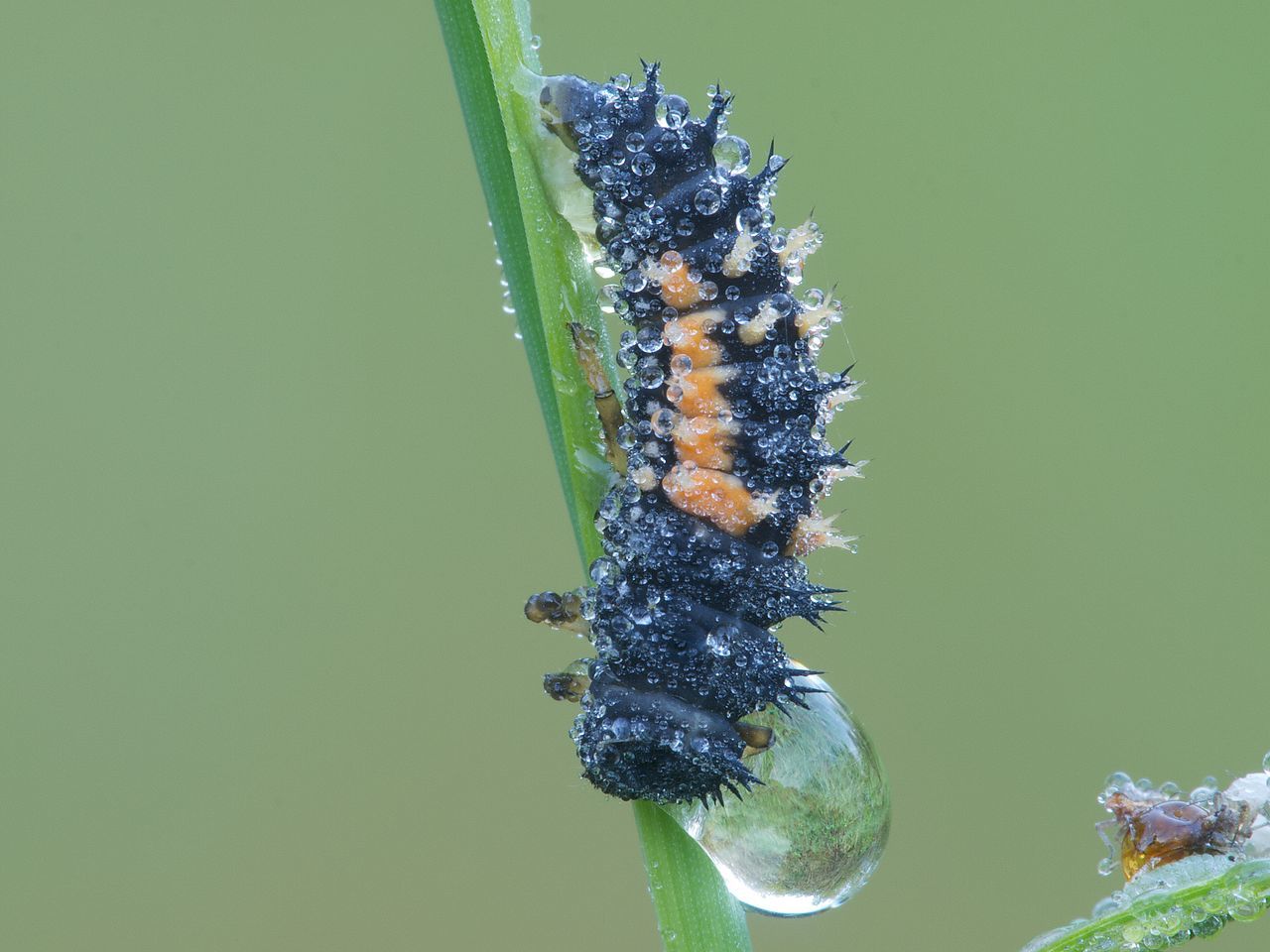
|
Larvae
Photo By Marcel Zurreck
|
|
|
|
|
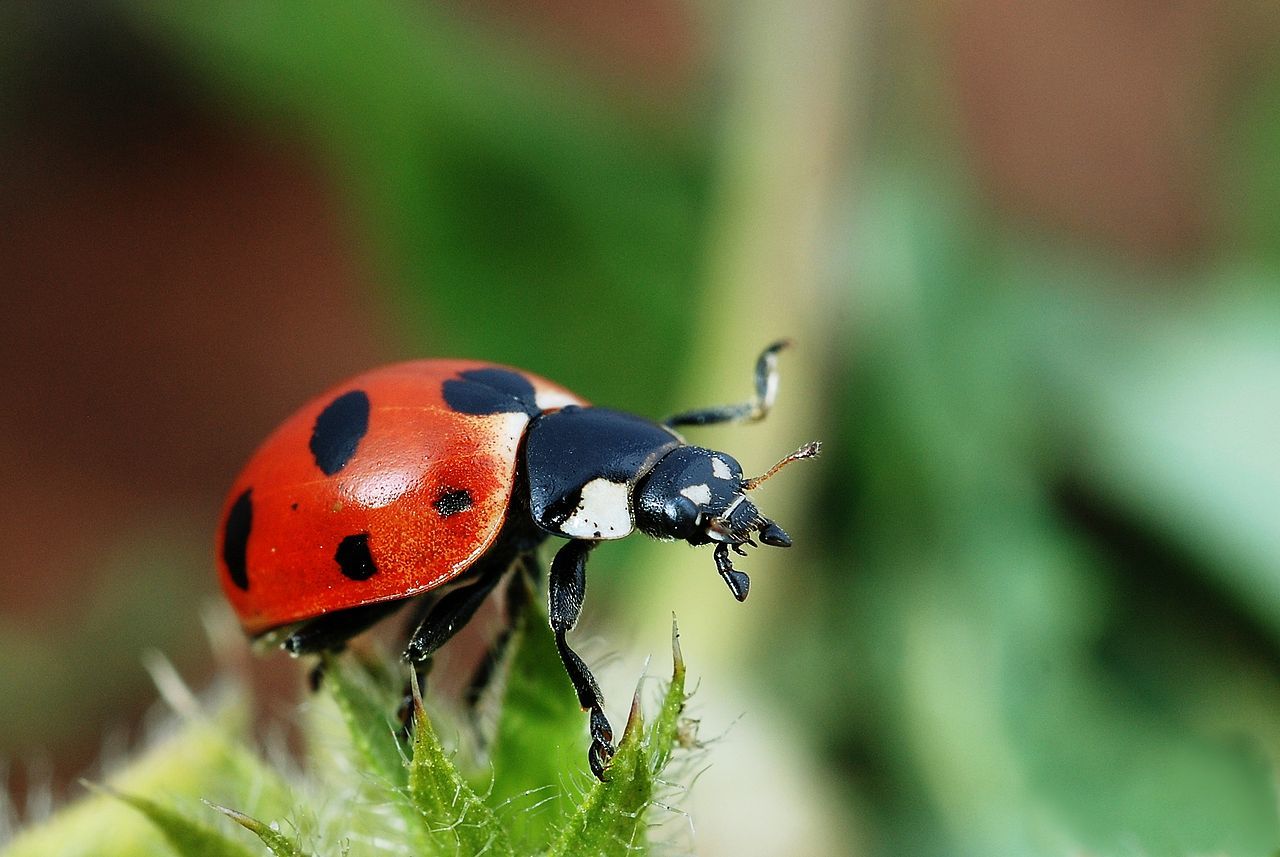
|
Adult
Photo By Gilles San Martin
|
|
|
|
|
|
|
Lady Bugs
Lady beetles, ladybugs, or ladybird beetles are among the most visible and best known beneficial predatory insects. Most lady beetles in North America are beneficial as both adults and larvae, feeding primarily on aphids. They also feed on mites, small insects, and insect eggs.
Many homeowners confuse the adorable ladybug for the multi-colored Asian lady beetle. The insects look very similar but there are a few key differences. Ladybugs are bright red in color with black spots that range in darkness. The Asian lady beetle is pale to dark orange with or without dark spots on the body. They also have a white "M" on the base of the head. Though the Asian lady beetle is a beneficial it can also be a pest as well coming into homes, pinching when threatened and killing off native species of ladybugs.
|
|
|
|
|
|
|
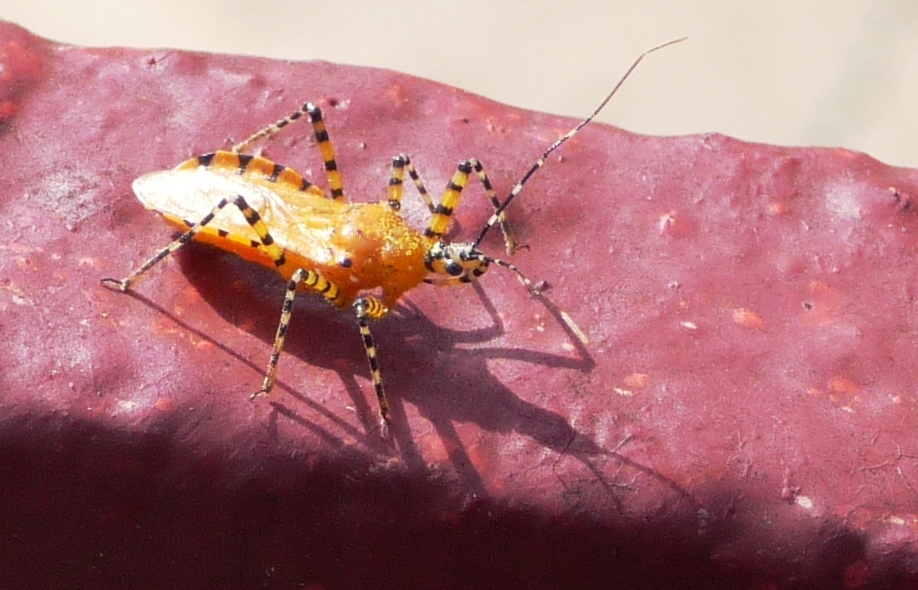
|
|
Photo By Cyndy Simms Parr
|
|
|
|
|
|
|
Assassin Bugs
Assassin bugs are generalist predators that feed on a wide variety of pests ranging from small ones like aphids to larger ones like caterpillars.
Most species are bright in color with hues of brown, black, red, or orange. The have a curved proboscis that they keep tucked back under their body.
All members of the family are capable of delivering a painful bite similar to a hornets sting if handled.
|
|
|
|
|
|
|
Praying Mantids
The larger group of these insects is more appropriately called the praying mantids. They are highly predacious and feed on a variety of insects, including moths, crickets, grasshoppers, and flies. Praying Mantis are good garden predators but do not discriminate between beneficial and harmful garden insects.
Cannibalism is common among Praying Mantis. After hatching, the young will eat one another if they don't immediately find prey. The adult female may consume her mate, severing the male's head while the pair is in the act of copulation.
Each fall, females deposit eggs in frothy brown cases that they attach to twigs. The cases harden, protecting the eggs from birds and weather. If you find them, you can remove the egg cases and put them into your garden.
|
|
|
|
|
|
|
|
Minute Pirate Bugs
Adults feed mostly on smaller insects, larva, and eggs, such as spider mites, thrips, jumping plant lice and whitefly, but they will also feed on pollen.
They are common in gardens and landscapes. Be careful though handling as they do have a painful bite.
|
|
|
|
|
|
|
|
Ground Beetles
Ground beetles are one of the largest groups of beetles found in North America.
Ground beetles love moisture and are often found in woods, fields, and gardens. They eat slugs, root maggots, cutworms, and other pests on the ground.
|
|
|
|
|
|
|
|
Syrphid Flies
Also called Hoverflies they are often mistaken for bees in the garden. Unlike bees, they do not have a stinger. Adults feed mainly on nectar and pollen and are an important pollinator in the garden. The young larvae feed on aphids.
|
|
|
|
|
|
|
|
Soldier Beetle
Larvae feed on the eggs and larvae of beetles, grasshoppers, moths and other insects while adults feed on aphids and other soft-bodied insects, along with pollen and nectar.
While reducing the number of plant-sucking insects, they also play an essential roll in the pollination of flowers.
They do not damage flowers or other plants and are also harmless to people, making it unnecessary to control them. Just ignore them, and they will go away on their own.
|
|
|
|
|
|
|
|
Big-Eyed Bugs
Big-Eyed bugs are considered a vital predator feeding on mites, insect eggs, and small insects such as cabbage loopers and whiteflies. They can also survive on nectar and honeydew. They can be found in fields, gardens and turf grass.
|
|
|
|
|
|
|
|
Damsel Bugs
Damsel bugs look similar to Praying Mantids. They feed on aphids, caterpiallars, thrips, leafhoppers, and other soft-bodied insects smaller than itself.
|
|
|
|
|
|
|
|
|
|
Northern Spicebush
(Lindera benzoin)
Fragrant yellow flowers open in early spring before the leaves emerge, and are held close to the branches. Preferred food for the black and blue spicebush swallowtail butterfly larvae. Aromatic light green leaves turn buttery yellow-gold in fall.
* Host Plant For Swallowtail Butterfly Larvae
* Fall Color
* Red Berries Birds Love
* Grows In Pt Sun To Full Sun/Wet to moderately dry soil
Grows:
6-10 Feet Tall
6-10 Feet Wide
In stock!
|
|
|
|
|
|
|
|
|
|
|
'Macaroon' Shasta Daisy
The double flowers start out yellow and open to bi-color white with yellow centers, then when fully mature are white with gold centers.
Grows:
14-20 Inches Tall
14-20 Inches Wide
Cost:
1.5 gallon $12.99
2 gallon $19.99
|
|
|
|
|
|
|
|
|
|
Balancing plants' water needs is like having a healthful diet. Everything should be consumed in moderation. Provide your plants with enough water for good health, but don't flood them with it.
Drainage Test:
The best way to know how water behaves in your soil is to dig a test hole one to two feet deep and fill with water. If it drains away in an hour or two you have excellent drainage. If it drains over night, you have adequate drainage. If it stands any longer, you have very poor drainage.
Rain Gauge:
Set a rain gauge in an open area of your garden to learn how much water your garden receives in a week. After each rainfall, check the depth of the rain inside.
Water In The Morning:
Watering in the mornings gives plants a chance to drink up before the hot sun or strong winds evaporate the moisture. It also allows any moisture on the leaves to evaporate before evening. Wet foliage during the night can lead to fungal diseases.
Water Only When Needed:
Water timers are a great invention, but you should not automatically water your lawn and garden, without checking the moisture. Too much water can be just as damaging to plants as too little water. Before whipping out the watering can or sprinkler, check your garden's soil moisture with your finger. Push it into the ground around your plants. You want the top 2 or 3 inches of the soil to be dry, and the soil below that to be moist.
Finger Test:(Most Important)
Soil clings to finger and feels moist to touch, don't water. If, soil falls loosely off finger and is dry to touch, then water.
Water Deeply:
The best way to water is to apply it at a rate that the soil will absorb with out runoff, but don't do a week's worth of watering all at once. Instead, you should water two to three times a week. By watering deeply the first season, you'll help your plants grow deep roots systems.
* Newly planted plants may need to be watered more often for the first few weeks. Check on them daily, but only water if needed.
Trees & Shrubs:
In order to encourage healthy root growth you need to provide enough water to soak the entire root ball. An open hose placed at the base of a tree with the water flowing slowly will provide needed water to the root zone. A thorough watering should last 30-60 minutes, depending on the size of the root ball.
Containers:
In hot weather containers may need to be watered every day. Sometimes twice depending on the size of the pot. It is important to remember not to let containers sit in water, always make sure their saucers are empty and that you have good drainage.
Mulching:
Mulching reduces surface runoff and slows evaporation along with reducing weed problems. As an added bonus mulching may also prevent certain kinds of soil diseases from coming into contact with your plants leaves. Avoid "mulch volcanoes" (heaping up around the stems) when applying.
|
|
|
|
|
|
Meet Our Staff Angela Oravetz
|
|
|
|
|
|
|
This is my 6th season at Wilson’s, although those seasons are not consecutive. I work in the office counting drawers, answering phones, handling customer service, making signs and price tags, or whatever else I am called to do.
I am a rosarian, and for several years now I have been a member of Moundbuilder’s Rose Society.
At home, my hubby grows a veggie garden, and I grow roses, perennials, and herbs. My favorites in the garden are pink roses and Munstead lavender. I also love 'All Ablaze' Roses.
|
|
|
|
|
|
|
|
|
|
|
|
|
|
|
|
|
|
|
|
|
|
Family Butterfly Release
Saturday, July 21st
Time: 1:00 pm
Cost: $10.00 per person
|
|
|
|
|
|
|
|
|
|